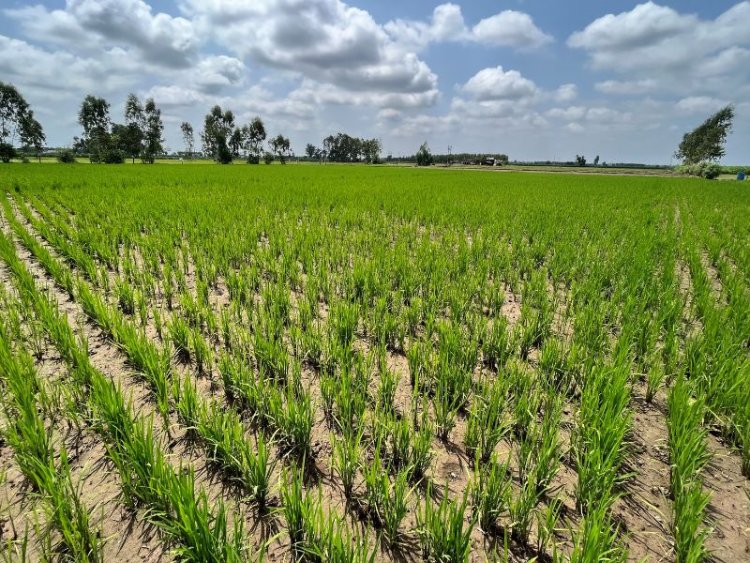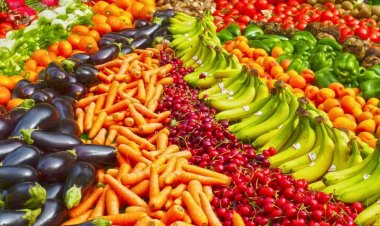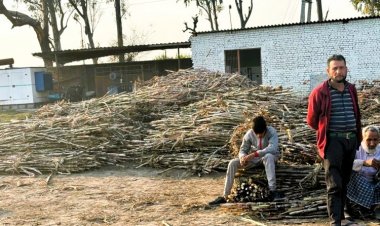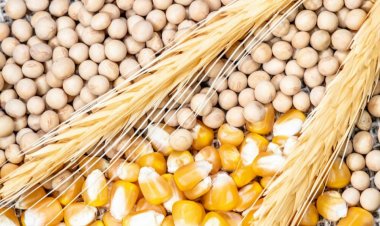The fear of adverse impact on agricultural production in the current crop year (2023-24) because of impact on monsoon due to strong El Nino seems to have been proved true. The first advance estimates of crop production released by the government for the current Kharif season (2023-24) are turning this apprehension into reality.
According to these estimates, production of rice, pulses, coarse grains, oilseeds, sugarcane, cotton and jute will be less than the Kharif production of last year (2022-23). Due to these estimates, the government and the Reserve Bank of India may continue to face problems on the inflation front and in the case of Daal-Roti, there is little possibility of the common man getting any major relief on the price front any time soon. At the same time, due to falling production of many crops, farmers are also facing huge loss of income, due to which it has become difficult for the rural economy to get back on track.
In such a situation, the possibility of bringing food inflation under control, which has been running in double digits for the last 14 months, looks weak. Food inflation is running in double digits from September 2022. In October 2023, it was 10.65 percent, which was 12.08 percent in October 2022.
The latest inflation rate of pulses, which has been in double digits since June 2022, has reached 18.79 percent, which is the highest level since August 2016.
In fact, the government had issued a press release on October 27 and released the first advance estimates of production in the current Kharif season (2023-24). In this, the production of crops was mentioned but no detailed information was given about how much more or less it was compared to the previous year. But the situation becomes clear by looking at the time series of production of crops prepared on the same day.
According to the first advance estimates of the Agriculture Ministry, the total food grain production in the current Kharif season (2023-24) will be 1485.69 lakh tonnes, whereas last year in the Kharif season (2022-23) it was 1557.11 lakh tonnes.
There is an estimated decline of 71.42 lakh tonnes in food grain production in the current year as compared to last year. Rice production in the current Kharif season is estimated to be 1063.13 lakh tonnes, which is 41.99 lakh tonnes less than the rice production of last year's Kharif season of 1105.12 lakh tonnes.
Among coarse grains, the production of maize and millet will also be less than last year. In this year of International Millet Year, the production of Shri Ann Nutri Cereals Jowar, Bajra, Ragi and Small Millets is estimated to be 126.55 lakh tonnes less than last year by 12.49 lakh tonnes. The total production of coarse cereals has been estimated to fall by more than 25 lakh rupees in the first advance estimates of the Agriculture Ministry.
The total food grain production including coarse grains is estimated to be 1414.50 lakh tonnes, which is 66.40 lakh tonnes less than the production of 1480.90 lakh tonnes in last year's Kharif season.
The situation in the case of pulses is quite troubling. According to the latest data, the inflation rate of pulses is at 18.79 percent, which is the highest level since August 2016. Not only this, the inflation rate of pulses has remained in double digits since June 2022. According to production estimates, the total production of pulses for Kharif season will be 71.18 lakh tonnes, which is about five lakh tonnes more than last year (2022-23).
It is a matter of concern that this production level of pulses is the lowest since 2016-17. The production of pulses in the Kharif season of 2016-17 was 95.85 lakh tonnes. Since then, till now the production of pulses in Kharif season has remained less than the level of 2016-17.
Dependence on import of edible oils is not likely to reduce. In the last edible oil year (2022-23), India imported a record of edible oils. There is an estimated reduction of more than 46 lakh tonnes in oilseed production in the current Kharif season.
According to the first advance estimate of the Agriculture Ministry, the total oilseed production in the current Kharif season (2023-24) is estimated to be 215.33 lakh tonnes, which is 46.17 lakh tonnes less than the oilseed production of 261.50 lakh tonnes last year (2022-23). The maximum decline of 34.17 lakh tonnes is expected to be in the production of soybean.
Last year, soybean production was 149.85 lakh tonnes, which is expected to decline to 115.28 lakh tonnes this year.
Among cash crops, sugarcane production is estimated to decline from 4905.33 lakh tonnes to 4347.93 lakh tonnes. There is an estimated decline of 557.40 lakh tonnes in sugarcane production as compared to last year. Whereas cotton production is estimated to decline from last year's level of 336.60 lakh bales (170 kg per bale) to 316.57 lakh bales in the current year. The production of jute and mesta is estimated to be 91.91 bales (180 kg per bale), which is two lakh bales less than last year.
According to the American agency NOAA, there is a 62 percent chance of El Nino remaining strong till June 2024. In such a situation, there is a possibility that the production will not be very good even in the current Rabi season because the post-monsoon rains remain very weak and the water level in the reservoirs is also low.




 Join the RuralVoice whatsapp group
Join the RuralVoice whatsapp group









































